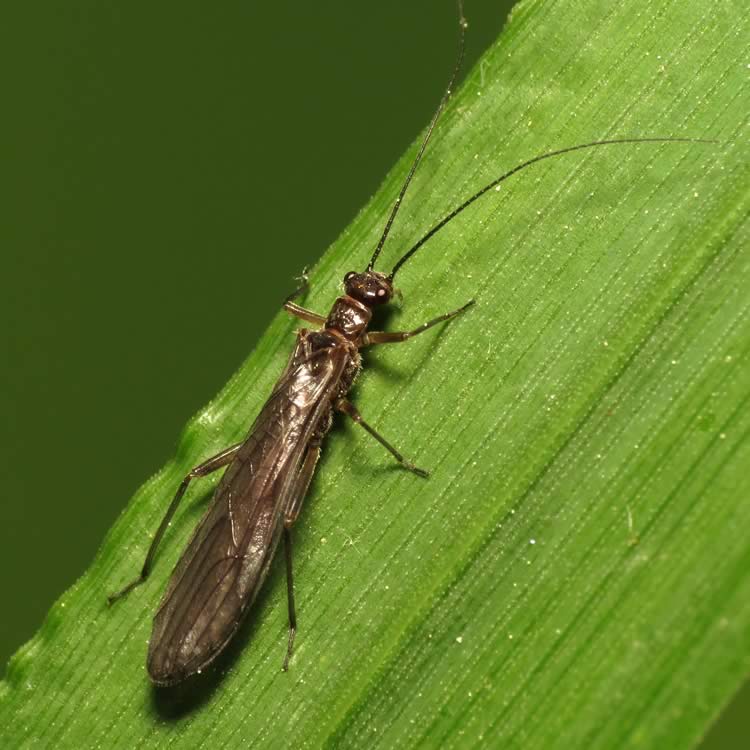Stonefly

Community type
Habitat type
Tidal wetlands and macrophytes beds
Stoneflies are a very common type of insect with some 3,500 species worldwide. There are many species in Tasmania, as well as six species in the genus Eusthenia, all of which are endemic to Tasmania. Stoneflies are soft bodied insects with large compound eyes, long antenna, and a pair of long antenna-like ‘cerci’ or tails, on the tip of their abdomen. They like to live in areas with running water, and mainly occur in freshwater habitats such as lakes and streams.
All stoneflies are very sensitive to water pollution, so their presence in a stream is an indicator of good or excellent water quality. The females lay hundreds or even thousands of eggs in a ball which they initially carry about on their abdomen, and then deposit into the water. Eggs hatch into aquatic nymphs with gills located on their abdomen between their tails, used for living under water. Nymphs live on the bottom or attach to the base of inundated reeds and sedges. As they grow they shed their exoskeleton numerous times in grow stages called ‘instars’ until they mature. Depending upon the species maturity can take from three months to three years. After all this time growing, life as an adult varies from a day or two, to a few weeks, with the primary purpose of mating. With most of the life-cycle spent in the water stonefly nymphs are food for fish, platypus, and other insectivorous animals like muck ducks and eels.
Mayflies, Caddisflies, and Alderflies are similar insects that commonly live in tidal wetlands.
